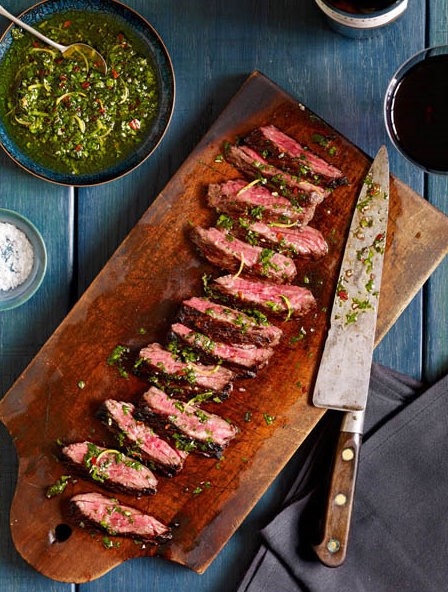You could say I’m a little obsessed with Sally Fallon. She’s the aunt I’ve never had (a lot of Y chromosomes in my family). The goddess of the kitchen I want to pull up a stool in. The author of the cookbook – Nourishing Traditions: The Cookbook that Challenges Politically Correct Nutrition and the Diet Dictocrats – with the zaniest subtitle ever. She’s also founding president of the Weston A. Price Foundation (for more on Weston A. Price go here), an organisation I have a lot of respect for.

*This blog post has been updated on February 5, 2016 and now reflects my current stance on eating raw foods.
She bangs on about eating whole food. Unadulterated REAL food, as our grandmother’s used to. And I really like to listen when she does. Because it’s real.
Oh, and FYI…Sally’s contributed a recipe to my I Quit Sugar Cookbook, which you can pre-order here.
Anyway, this morning I talked to her about enzymes: how eating them makes you age more slowly and gracefully and how to get more of them into your diet.
Listen in here:
[display_podcast]
For those wanting it nice and clear, here’s a cheat sheet for you
Why do we care about enzymes?
The short answer: they affect how long we live, and how well we’ll be in the process. This is how…
There are two types of enzymes for digestion
1, Digestive enzymes: Mostly manufactured by the pancreas, they break down food leaving the stomach.
2. Food enzymes: These exist in the raw food itself and they help our bodies break down that particular food as we eat it. Eg: lactase in milk helps us process lactose (which is why low-fat milk is such an issue…in the de-fatting process much of the lactase is lost).
Know this:
We have limited digestive enzymes in our bodies AND when these stores are used up, it ages us.
The aging process is the depletion of digestive enzymes, more or less.
Which means…
Eating food with lots of their own enzymes saves our bodies (our pancreases) from doing the work.
Thus saving us from aging more than we damnwell have to.
As Sally writes in Nourishing Traditions:
A diet composed exclusively of cooked food puts a severe strain on the pancreas, drawing down its reserves, so to speak. If the pancreas is constantly overstimulated to produce the enzymes that ought to be in foods, the result over time will be inhibited function. Humans eating an enzyme-poor diet, comprised primarily of cooked food, use up a tremendous amount of their enzyme potential in the outpouring of secretions from the pancreas and other digestive organs. The result, according to the late Dr. Edward Howell, a noted pioneer in the field of enzyme research, is a shortened life-span, illness, and lowered resistance to stress of all types.
Also know this:
Enzymes are at a wet-heat temperature of 48 C and a dry-heat of 65 C. As Sally says, “It is one of those happy designs of nature that foods and liquid at 47 C can be touched without pain, but liquids over 48 C will burn. Thus we have a built-in mechanism for determining whether or not the food we are eating still contains its enzyme content. “ I love perfect human body set-ups like this.
Sally shares this:
Aim for a diet that is 50 percent raw or enzyme-enhanced.
Although, when we spoke, she also conceded that some people just don’t like raw food, or have trouble digesting it (I’m in this camp). This is cool, she says, so long as….
If the meal you serve consists entirely of cooked foods, then a lacto-fermented condiment is a must.
A good rule is to start your evening meal with a dish containing enzymes—either a salad with homemade dressing, raw meat or fish, or soup containing cultured cream. If your next course includes a sauce made from gelatin-rich stock, easy digestion and a peaceful night’s sleep will be assured.
She mentions her four favourite ways to up her enzymes are:
- Beet Kvass
- Sauerkraut (here’s my recipe)
- Raw milk
- Kombucha
21 more ways to increase enzymes in your diet:
- Raw milk
- Eating tropical fruits (they contain more enzymes than other fruits): pawpaw is relatively low in sugar and, of course, avocados are just wonder fruits!!
- Fermented sauerkraut and vegetables (see my recipe)
- Sushi
- Oysters
- Beef tartare
- Prosciutto
- Coconut water
- Raw butter
- Ceviche
- Homemade cream cheese (see my recipe here)
- Sprouted legumes
- Pesto made with fresh basil, raw Parmesan, and raw pine nuts (soaked and dried)
- Fresh guacamole
- Steak, cooked medium rare
- Gazpacho
- Avocado on toast
- Caviar
- Hollandaise or mayonnaise made with raw egg yolks (Sally points out that raw egg whites can actually be enzyme de-activators)
- Raw egg yolks added to smoothies or milk shakes
- Tzatziki
Me, I personally like warm mushy foods… An argument can also be made about some vegetables requiring heating in order to make their vitamins and minerals available, such as starchy veg like potato. The valuable nutrients are contained in the starch and in order for out bodies to absorb them we need to cook the vegetable to make it easier for our body to break down.
I suggest having a combo of both raw and cooked veg so you get the best ban for your buck.
Perhaps you have some ideas, too? And perhaps some thoughts on the raw food diet…


